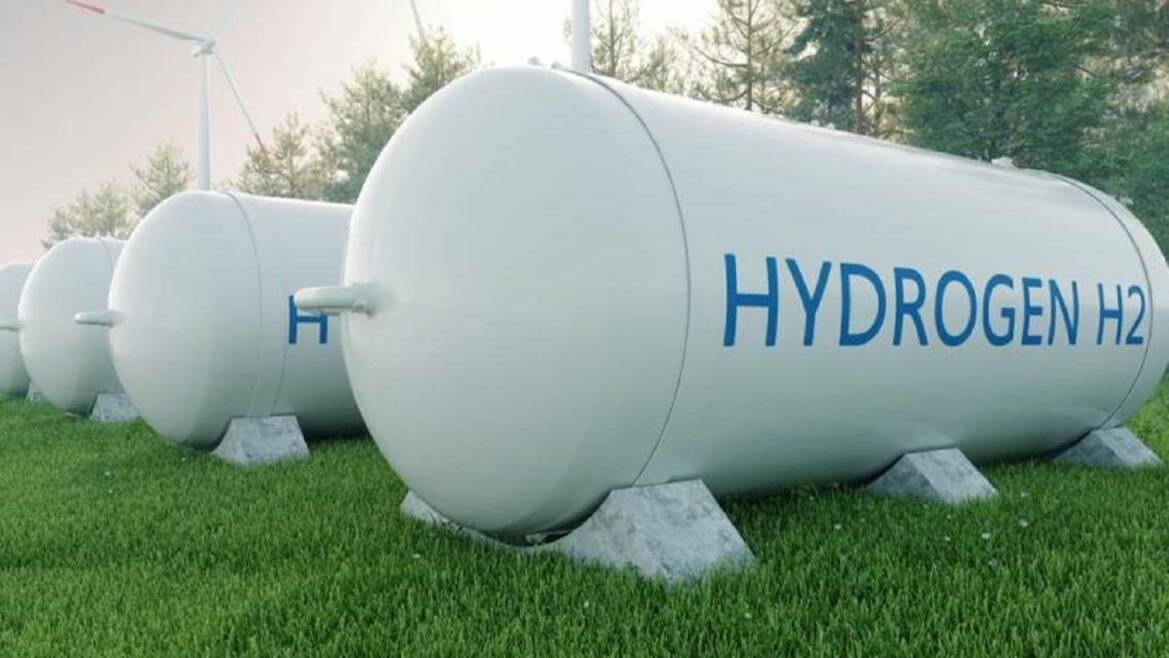Updated May 10, 2023 – 6:23pm, first published 1:55pm
The Federal Government’s new $2 billion Hydrogen Headstart program will fast-track the Hunter’s transformation into a hydrogen superpower, industry leaders believe.
The program, announced in the federal budget, aims to drive down the cost of producing green hydrogen and help accelerate Australia’s renewables revolution.
Hunter projects that are likely to directly benefit include the Port of Newcastle’s clean energy hub and the proposed joint venture projects between AGL and Fortescue Future Industries at the site of the former Liddell Power Station and Origin and Orica at Kooragang Island.
“The Hunter’s position in the new hydrogen market has been building for a number of years now and this will accelerate those opportunities,” director of the University of Newcastle’s Institute for Energy and Resources Alan Broadfoot said.

Alan Broadfoot
Investment banking company Goldman Sachs last year estimated that green hydrogen – produced with renewable energy – will reach cost parity with hydrogen produced from gas (blue hydrogen) in some regions by 2025. This would bring the cost of producing a kilogram of green hydrogen to $US1.50.
Not far behind is hydrogen cost parity with diesel in long-haul heavy road transport, which could be reached as early as 2027.
The Hydrogen Headstart program will future accelerate this timeline.
Professor Broadfoot said the program would bring dual benefits to the Hunter Region.
“Certainly the funding is looking at developing an export market, but it’s also a great opportunity for the university to help develop an upstream industry here in the Hunter to leverage off that. The cost of hydrogen will come down by large-scale production and that will also create reciprocal opportunities such as an alternative energy source for industry,” Dr Broadfoot said.
The previous state government committed $70 million towards the establishment of green hydrogen hubs in the Hunter and Illawarra as part of the Net Zero Industry and Innovation Program.
In addition, the previous federal government declared the Hunter as one of seven national hydrogen hubs designed to supercharge the development of a multibillion-dollar export industry.

Concept plan for the Port of Newcastle’s clean energy hub
At a regional level, the Hunter is well advanced in planning to capitalise on the potential of hydrogen.
The University is also leading the Hunter Hydrogen Taskforce, which developed the Hunter Hydrogen Roadmap on behalf of the Committee for the Hunter.
The committee is also overseeing the Hunter Hydrogen Infrastructure Masterplan.
READ MORE:
New H2 Hunter Hydrogen Technology Cluster co-lead Clare Larkin-Sykes said it was essential for the region’s stakeholders to work in a coordinated way to maximise the benefits.
“I think the most important piece for the region is that we are coordinated and that we are part of the design and consultation process so the Hunter is seen as the primary region where hydrogen production will take place,” she said.
“The government is putting its commitment behind green hydrogen and we want to be on the front foot.”

Andrew Forrest at Liddell Power Station in late 2021. Picture by Simone DePeak.
Fortescue Future Industries chairman Andrew Forrest and AGL launched a feasibility study into the production of green hydrogen at the site of the former Liddell Power Station in late 2021.
An announcement about the outcome of the study is expected by the end of the year.
In a sign of confidence, two of Japan’s biggest energy companies – Inpex Corporation and Osaka Gas were linked to the project as part of an expanded feasibility study.
A Fortescue Future Industries spokeswoman said the company welcomed the Hydrogen Headstart program.
“This is a great first step. We look forward to working with the government on the broader response over the rest of this year which will catalyse the whole industry in Australia,” she said.
Fortescue has the green hydrogen projects in the pipeline ready to go to help drive the Australian industry forward. Green energy will create significant economic growth and prosperity for Australia in the years ahead.
“Green hydrogen will lower emissions, create greater energy security for Australia and create new jobs. It is an important part of the decarbonisation of the Australian economy.”
The beleaguered Hunter Power Project at Kurri is likely to be another beneficiary of the government’s green hydrogen catalyst package.
The government allocated an extra $700million to the gas peaker project during the federal election to allow it to be adapted for green hydrogen.

Budget helps put Hunter in the box seat for green hydrogen transformation.
The government was last year forced to back away from a pledge to use green hydrogen in the peaker’s fuel mix from the start of operations.
The project, which is being built by Snowy Hydro 2.0, was initially due to commence producing power to offset the closure of Liddell Power Station last month.
It is presently due to begin operating towards the end of next year.
Climate Change and Energy Minister Chris Bowen last week said slippages in the cost and time-frame for Snowy 2.0 had been hidden from him until he became minister.
“When we came to government my incoming minister’s brief told me that Snowy 2.0 was running at least 12 months late,” he said.
Former Snowy Hydro chief executive Paul Broad denied any information had been withheld from Mr Bowen.
